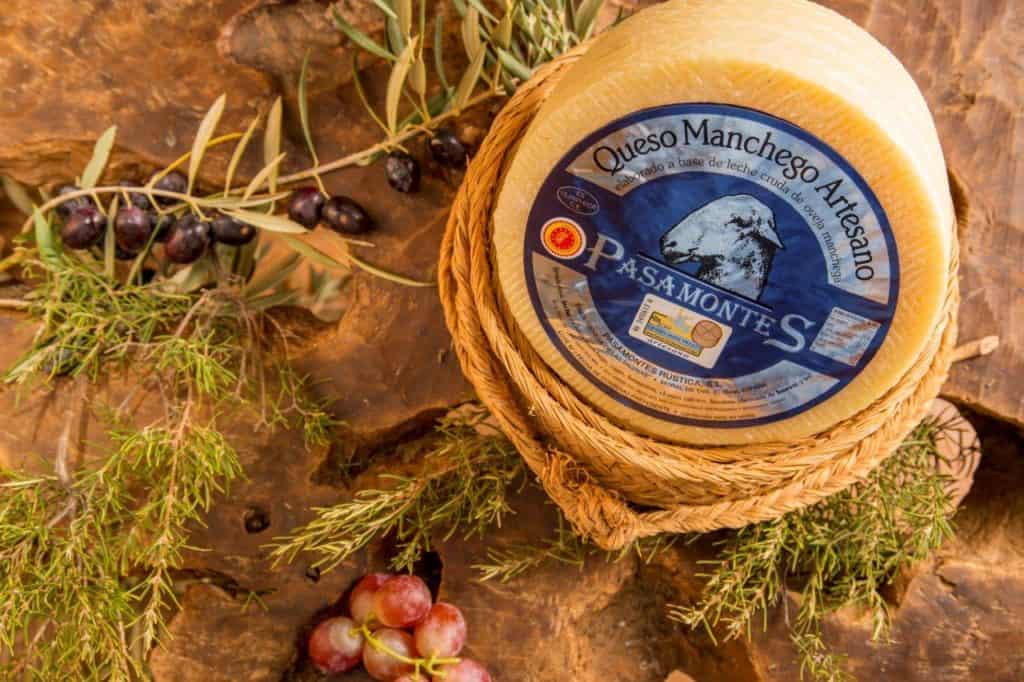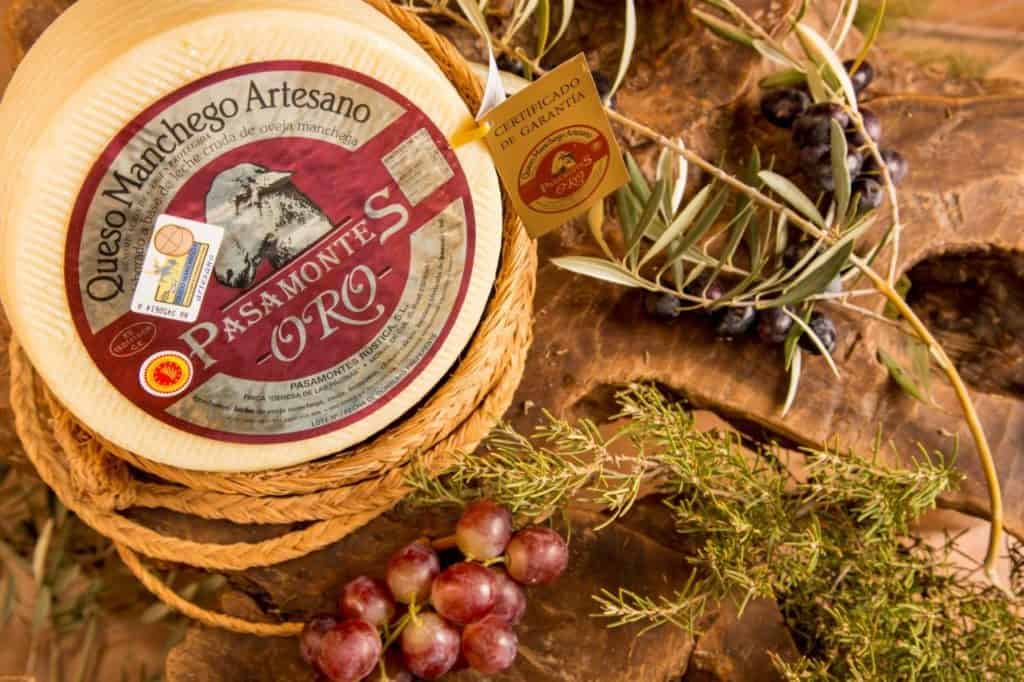“When I was a child, I remember how cheese was made in a large cauldron, in a water bath and how I liked to cut the curd with a metal ruler,” recalls María Dolores Pérez-Guzmán Palomares. She is the fifth generation in her family to preserve Manchego sheep’s milk cheesemaking traditions started by her great grandmother in 1896 in the Castilla La Mancha region of Spain.
Manchego–officially called Queso Manchego–can only be called such if it is made in Castilla La Mancha with milk from the La Mancha breed of sheep autochthonous–or, indigenous–to that region. The Manchego designation is protected under Spain’s regulatory classification system and granted Protected Designation of Origin (PDO)–or in Spanish, Denominación de Origen Protegida (DOP)–status by the European Union. Pasamontes has been a consistent DOP winner including the 2012 Gold Medal for their Manchego Artesano DOP Semicurado.
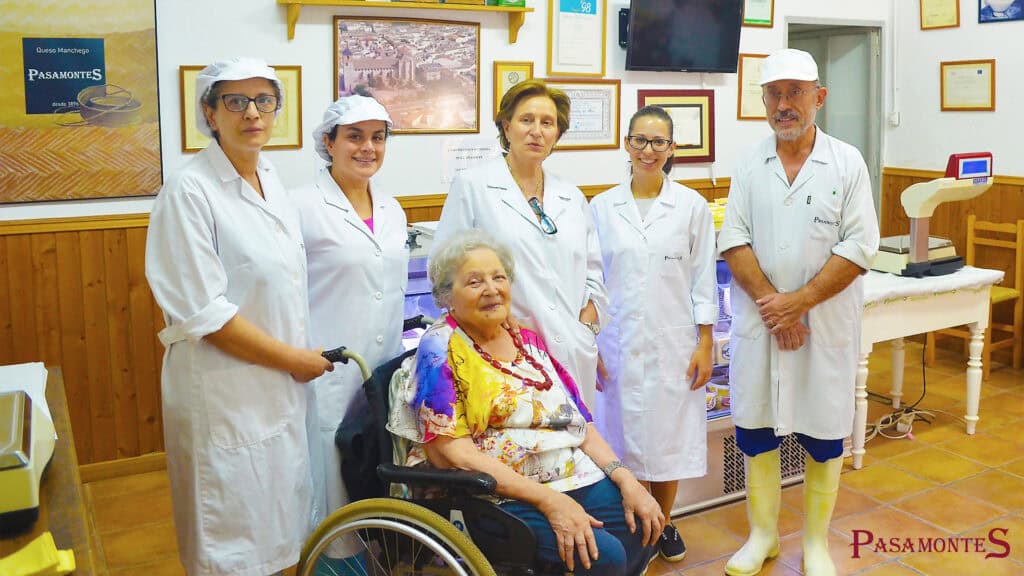 María Dolores continues recounting her childhood memories of cheese making: “The water was heated for the water bath over the fire in a fireplace. Every time the cheese was made, the children– my brothers and my cousins [and I]–would stand around to see how it was made,” she says, then adds, “The truth is that we bothered and sometimes they threw us out!”
María Dolores continues recounting her childhood memories of cheese making: “The water was heated for the water bath over the fire in a fireplace. Every time the cheese was made, the children– my brothers and my cousins [and I]–would stand around to see how it was made,” she says, then adds, “The truth is that we bothered and sometimes they threw us out!”
More than a century after Pasamontes’ beginning, María Dolores continues to craft Pasamontes Manchego at the same location her great grandmother got started and where she, Maria Dolores, once stood around the cauldron as a child. She is now 62 years old. “But I feel much younger,” she adds. Good thing, because she works in nearly all aspects at Pasamontes.
“I [work] 10 hour days,” she says. “Managing purchasing, accounting, orders, cheese storage, and cheese traceability, both new and established clients. A bit of everything. The only thing I don’t do is make the cheese, for this we have a cheese master that we have trained.”
The cheese shop is right next to the cheese factory and locals line up and filter in all day long for her cheese. “Her customers are her friends and love to see her smiling face,” says one friend of María Dolores. “She is quiet, humble, yet serious and well respected. Genuine and strong, so focused and determined and proud.”
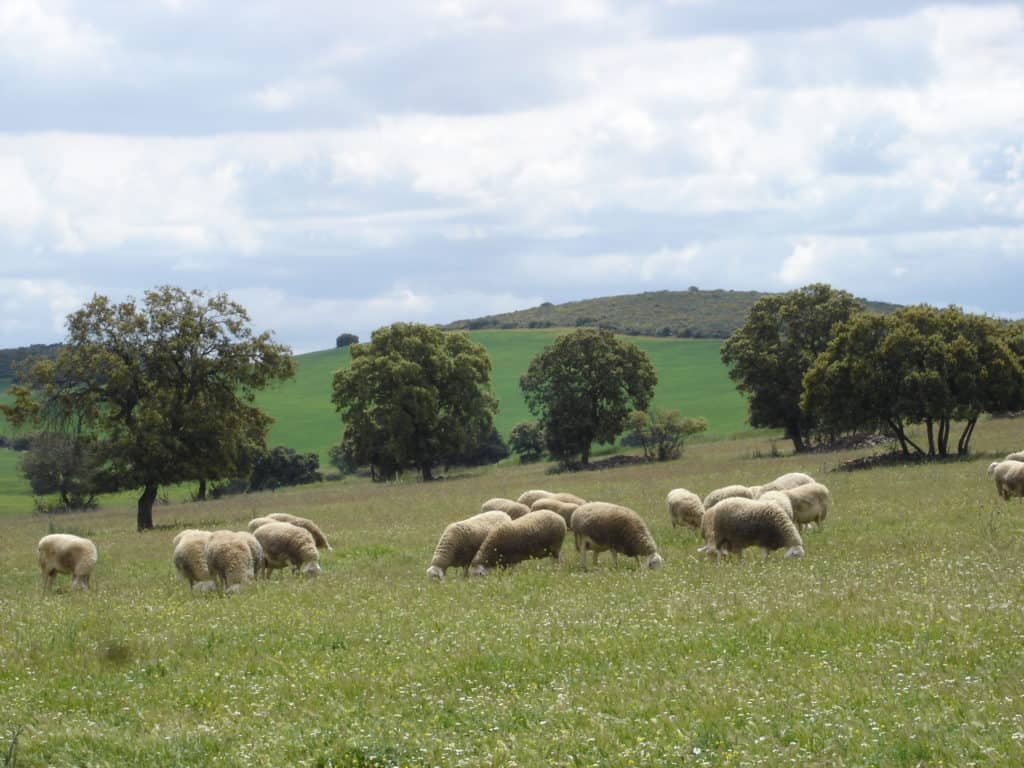 The countryside surrounding the Pasamontes farm and artisan cheese factory is typical of the Castilla La Mancha region of Spain; gently rolling green hills punctuated by rocks and low shrubs, Holm oaks, wild olive trees and plants like juniper, lavender, rosemary and thyme.
The countryside surrounding the Pasamontes farm and artisan cheese factory is typical of the Castilla La Mancha region of Spain; gently rolling green hills punctuated by rocks and low shrubs, Holm oaks, wild olive trees and plants like juniper, lavender, rosemary and thyme.
Pasamontes’ milk is sourced from five local herds all within a 20 kilometer radius of the Pasamontes farm. The sheep graze mainly in natural pastures of grasses and some legumes. “In total,” says Maria Dolores, “there are about 5,000…La Mancha sheep.” She goes on to explain that archaeological remains reveal that cheese was made in the region where Pasamontes is dating back to the Bronze Age.
Pasamontes produces four Manchego cheeses: Manchego cheese ripened in olive oil; Mature Manchego aged 6-7 months; Manchego Artesano DO, 3 months (a semi-curado cheese aged 3-4 months) and Manchego Artesano DO, 12 months (a curado cheese aged 10-12 months). A side note that although Pasamontes’ cheeses are indeed crafted with artisanal methods, the “Artesano” signifier indicates the cheese is made with raw milk.
Rogers Collection carries the two ages of Artesano cheeses–the 3-4 month aged (semi-cured) and 10-12 month aged (cured)–that María Dolores feels are the best expression of her cheese. María Dolores describes her cheeses in such a way it is clear she has been involved in the production and tasting of Pasamontes Manchego since those early days as a child gathered around the fireplace while the adults stirred the milk over the fire.
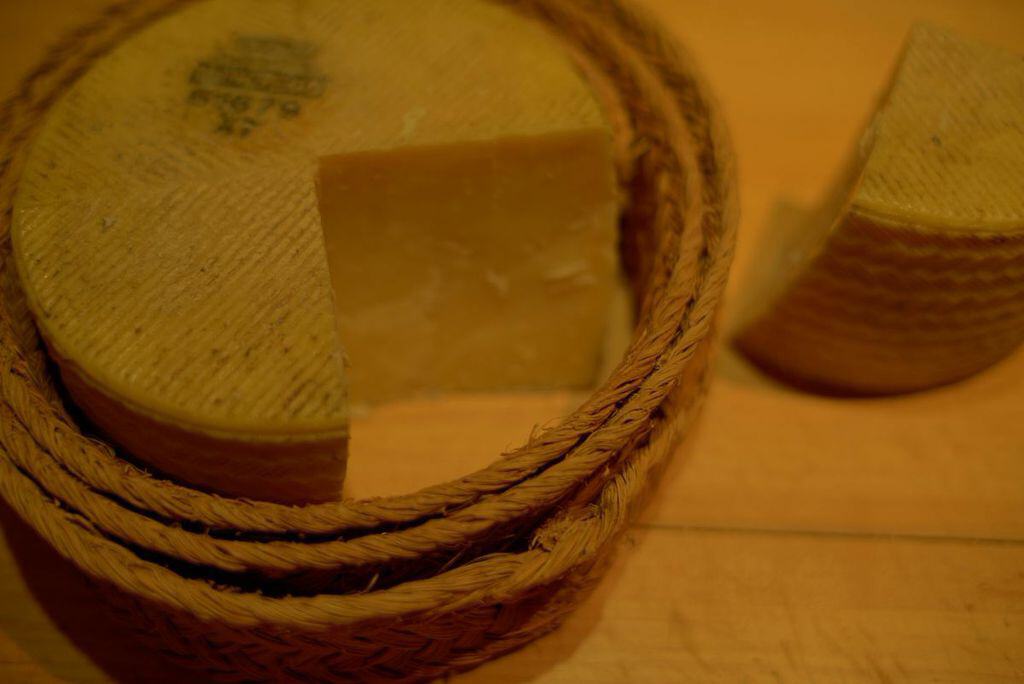 “Our semi-cured cheese is characterized by being quite buttery with some lactic and yogurt flavor and also some herbaceous notes,” says María Dolores. “The residual taste is very pleasant and peculiar, conferred by the La Mancha sheep’s milk.”
“Our semi-cured cheese is characterized by being quite buttery with some lactic and yogurt flavor and also some herbaceous notes,” says María Dolores. “The residual taste is very pleasant and peculiar, conferred by the La Mancha sheep’s milk.”
“On the contrary,” María Dolores says, “the most cured cheese has flavors of nuts with a touch of chocolate. We no longer find that lactic flavor but very often it still presents a ‘buttery’ texture within its curing period (10-12 months). The sensation when taking this cheese is pronounced, intense and persistent.”
Although these cheeses are delicious solo, Maria Dolores was brimming with traditional family and regional recipes.
“We have some recipes that my mother liked very much. In a pan with hot oil, add a square of semi-cured cheese previously coated with beaten egg, and fry. You can also add some aromatic herbs. This recipe is quite old and typical of the shepherds.”
The Manchego Cheese sauce she describes sounds just as mouth-watering. “The cheese is finely grated without the rind, the parsley and basil are also finely chopped.” María Dolores says to mix these ingredients and put into a bain-marie with three egg yolks and olive oil while stirring. Season with salt and pepper to taste and leave to simmer until desired cheese sauce consistency is reached. Great over vegetables. Then there is Manchego Cheese but with mushroom and ham served over pasta.
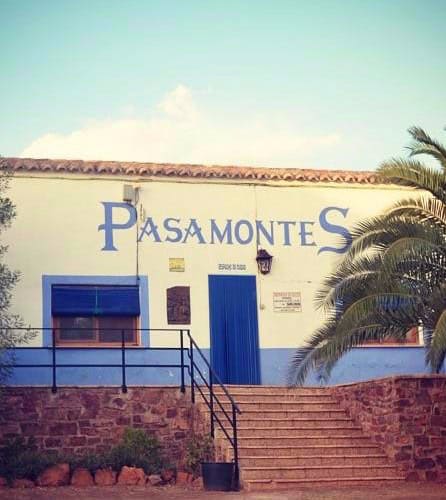 “Throughout so many years, our family has lovingly maintained the [operation] inherited from our ancestors,” says María Dolores. “And they have done so trying to improve what they had at all times.”
“Throughout so many years, our family has lovingly maintained the [operation] inherited from our ancestors,” says María Dolores. “And they have done so trying to improve what they had at all times.”
What is next for Pasamontes? Will the sixth generation be taking its place soon?
“At this time, the next generation of my nephews and my eldest daughter could take over the cheese,” María Dolores says. “But at the moment I am not thinking of retiring and my vacations are always short so as not to be too long from the cheese factory. We are few people and I can help them where necessary.”
Although María Dolores is dedicated to the family business, she does take moments to slow down. “In the afternoon, before going home, I often go for a walk in the countryside. My favorite time is spring or autumn…a good rainy year; the field is green and in the mountains the flowers of rosemary, thyme, lavender, [and] rockrose bloom. I like to climb one of the peaks that we have on the farm and see the entire valley.”
Written by Leska Tomash
PASAMONTES MANCHEGO ARTESANO DO 3 MONTH
PASAMONTES MANCHEGO ARTESANO DO 12 MONTH
